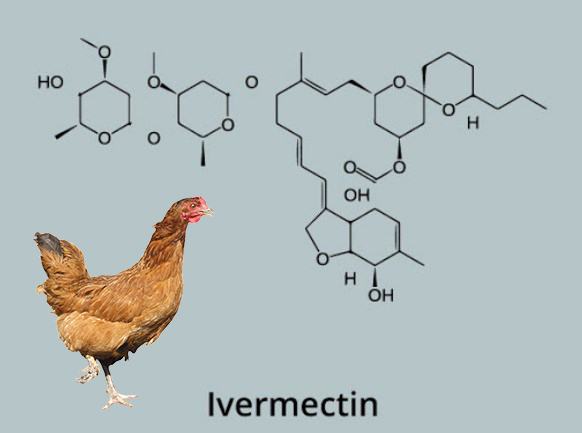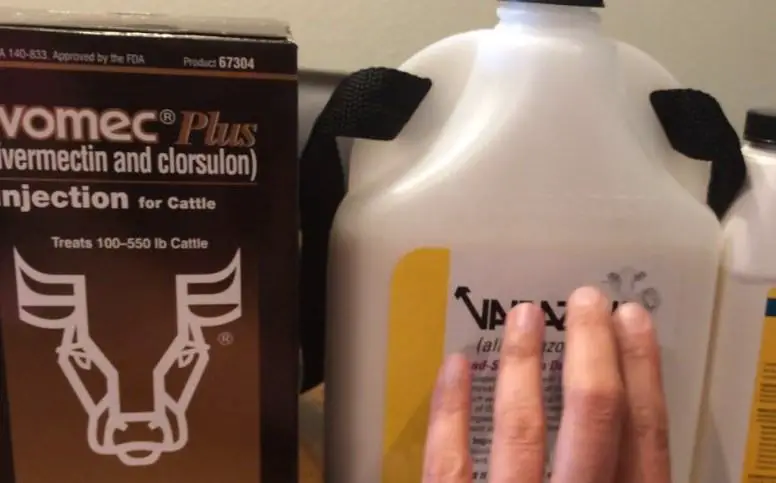No products in the cart.
Goat
Ivomec Plus Dosage for Goats: Read This Before Use!
Goats are susceptible to several types of internal parasitism including roundworms or coccidia. One of the solutions for this problem is Ivomec Plus. However, not all farmers are informed about this medication.
Our article will provide detailed information regarding the Ivomec Plus dosage for goats as well as additional useful facts.
*This post may have affiliate links, which means I may receive commissions if you choose to purchase through links I provide (at no extra cost to you). As an Amazon Associate I earn from qualifying purchases. Please read my disclaimer for additional details.
What is Ivermectin?
Ivermectin refers to a semisynthetic, antihelminthic agent used to administer orally. Ivermectin is obtained from the avermectins which are a class of agents effective against a wide range of organisms, destroying parasites and derived from the fermented outcomes of Streptomyces avermitilis.
Ivermectin is a powder with the following characteristics: colors from white to off-white, nonhygroscopic and crystalline. The melting point of Ivermectin is around 155 degrees Celsius. It’s water-insoluble but methanol-soluble and 95% ethanol-soluble.
Ivomec drench was introduced in the 1980s and it’s the medication choice for meningeal worms. Its purposes include controlling adult & L4 larva GI worms, larva hypobiosis, adult & larva lungworms as well nosebot’s larval stages.

Read more: Ivermectin for Chickens
Guides on IVOMEC PLUS dosage for goats
The dosage for Ivomec Plus for goats is 0.4 mg per 1 kg of live weight.
In comparison to sheep and other cattle, goats often need a higher dosage of ivermectin, occasionally twice as much since anthelmintics breaks down inside goats significantly faster than sheep and other cattle.
In other words, the medicine disappears from goats’ system faster while it hasn’t fulfilled its purpose.
Administering double the dosage of ivermectin won’t be always associated with increased effectiveness of the medicine. Some medicines may even be toxic if you double the treatment when the animals have already carried the parasites.
However, if it’s deemed necessary, which is when the goats are resistant to anthelmintics, you should administer another dose half a day after the macrocyclic lactone medicines to increase the time length that the anthelmintics stay in their gastrointestinal tract.
Keep in mind that when using Ivermectin, the withdrawal time is 14 days for meat goats and 9 days for milk goats.
Is IVERMECTIN PLUS safe for pregnant goats?
Deworming pregnant goats is necessary to reduce the likelihood of internal parasite transmission to the goat fetus. The pregnant cattle should be administered deworming medication between 2 and 4 weeks before giving birth.
After parturition, the female goat should be dewormed the next day because of their susceptibility to worms caused by lactating depression as well as the extra stress related to milk production.
However, it’s important to note that not all of these deworming medications are safe for gestating or lactating females.
Ivermectin and Pyrantal Pamoate are known to be safe for deer, pregnant canines, and pigs, so, likely, Ivermectin Plus will also be safe for pregnant goats. However, you should seek advice from your veterinarian just to be sure.
Can I use Ivermectin for baby goats?
Goats are highly prone to many kinds of internal parasites during their life span, especially baby goats or kids.
It’s optimally suggested that young goats start to take deworming medication when reaching around 8 weeks old and maintain the use of this medication throughout their life.
The baby goats may suffer from the worming every one to months until they reach 1 year old.
For kids over 1-year-old, their worming pattern will be similar to adult goats for the rest of their life.
Read more: Baby Goat Poop Chart You should Save!
Other ways for better parasite control
It’s inevitable to find internal parasites in goats. Therefore, besides treating them, you need other long-term solutions to help your livestock avoid parasites as much as possible.
Below are some tips that you should take into consideration.
1. Provide good management
Overstocking is identified as the main cause that leads to goats’ internal parasitism. Therefore, you should manage the stocking situation on your farm well to control parasites more effectively.
There are several actions that you can take to achieve this purpose:
- A clean farm and goats’ living quarters
- Utilization of feeders to prevent waste and contamination
- Avoid stocking too many goats inside pens & pastures.
- Place new goats on the farm in isolation and deworm them
2. Create a clean pasture
Another tip that helps you improve parasite control is the usage of cleaner and safer pastures.
For example, a pasture is considered clean or safe if it’s new, renovated with tillage, or hasn’t been grazed by livestock for the last 6-12 months or grazed by a pair of livestock not affected by the same parasites (goats and horses; sheep and horses).
3. Rotate pasture
Rotating pasture is also recommended to control internal parasitism better since it ensures safer pastures.
However, rotating grazing intensively may not be effective in reducing parasitism if rest periods are not long enough. To ensure the effectiveness of the rotational grazing method, sheep or goats should not stay in the same pasture for 2-3 months.
4. Forages of leaves & herbs
Browsing cattle show few parasite issues, especially when they consume tall-growing forages because the first two inches of vegetation are home to ⅘ of parasites.
Grazing plants containing tannin may mitigate the effects of parasites on livestock. Some examples are chicory, Sericea Lespedeza as well as birdsfoot trefoil, which helps decrease the number of fecal eggs and/or hinder larval development.
5. Zero grazing
It’s shown that if you raise livestock including sheep or goats in zero gazing condition, which mean confinement or living in dry lots, they will be less likely to suffer from worm issues or worm reinfection.
However, your cattle can still be susceptible to coccidiosis if other preventive measures like good sanitation, appropriate feeders, or coccidiostats administration are not taken.
Read more: Top 4 Best Copper Bolus For Goats
Before leaving
From our article, it’s important to remember how much Ivomec Plus to administer to goats, which is 0.4 mg per 1 kg of live weight.
We also offer you information about Ivermectin, whether it’s safe to give Ivomec Plus to pregnant goats and to kids, the withdrawal period of the medication as well as methods to improve parasite control.

